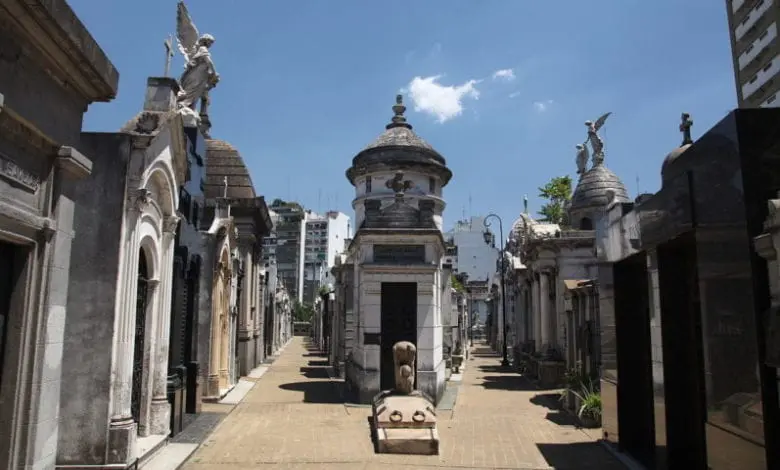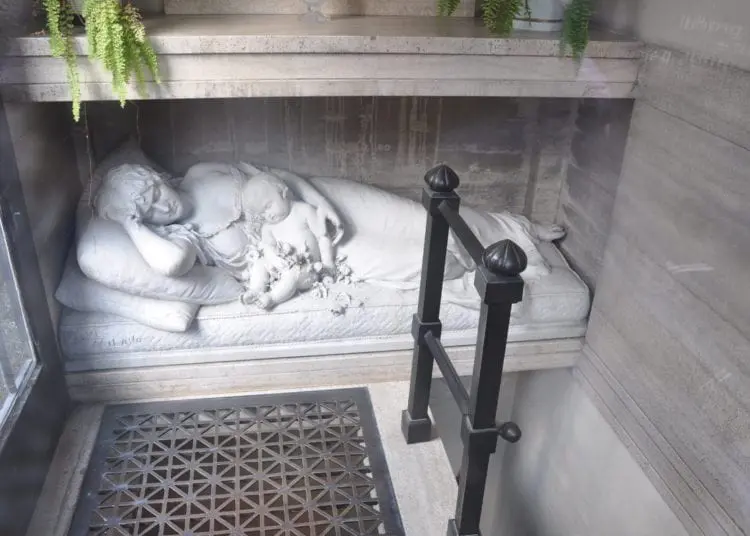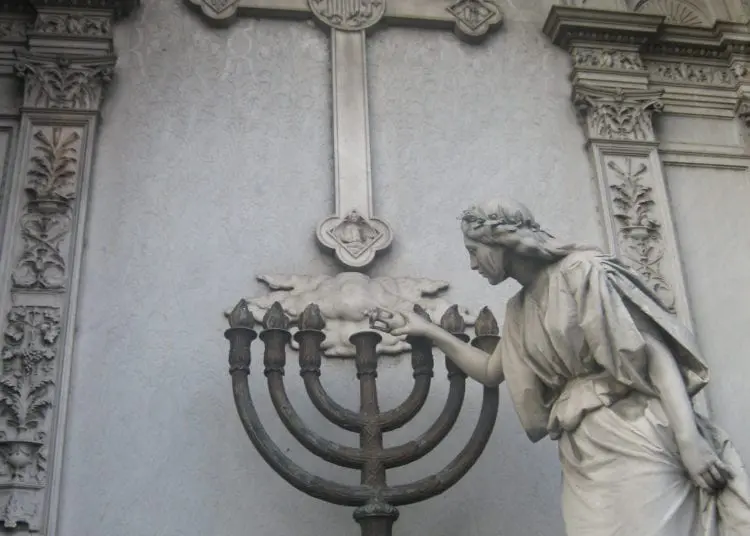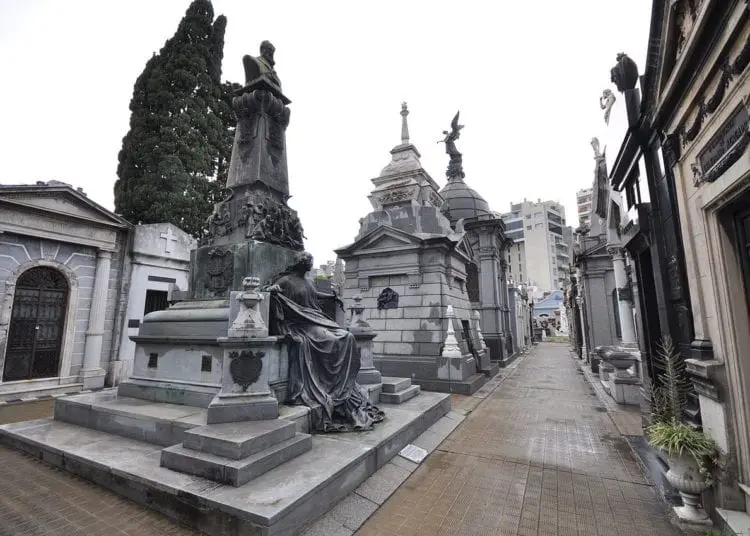Cemeteries around the World: La Recoleta Cemetery

Located in Buenos Aires, Argentina, La Recoleta Cemetery contains the graves of many notable people throughout history. In 2011 the BBC in fact named the cemetery as one of the world’s best cemeteries and said it was one of their ‘favourite resting places’.
The cemetery was created in the early eighteenth century by monks of the Order of the Recoletos. It was built around the convent and church. In 1822 the garden of the convent was converted to Buenos Aires’ first public cemetery. Próspero Catelin, a French civil engineer designed the layout in 1822. However, it was remodeled in 1881 by Italian architect Juan Antonio Buschiazzo.

As it stands today the cemetery is more like a museum of art and culture, with many of the graves being placed under extravagant statues and sculptures. There are over 6,400 mausoleums that all cater to different styles, such as Greek temples and elegant gothic chapels. 94 of the vaults have been declared National Historical Monuments by the Argentine government. Free tours in English take place at 11am on Tuesdays and Thursdays.
Famous inhabitants:
Adolfo Bioy Casares (15 September 1914 – 8 March 1999)
Born in Buenos Aires, Bioy Casares was an Argentinian writer, journalist and translator. Despite being his seventh book, The Invention of Morel, published in 1940, was considered his breakthrough short novel. In his time as a writer he won several awards, including the Gran Premio de Honor of SADE (the Argentine Society of Writers, 1975), the French Legion of Honour (1981), the Diamond Konex Award of Literature (1994) the title of Illustrious Citizen of Buenos Aires (1986), and the Miguel de Cervantes Prize (awarded to him in 1991 in Alcalá de Henares).
Agustín Pedro Justo Rolón (26 February 1876 – 11 January 1943)
 A military officer, diplomat and politician, Agustín Pedro Justo Rolón was president of Argentina. He was elected president during the ‘Infamous Decade’ or ‘Década Infame’. This period of time began in 1930 with a coup against president Hipólito Yrigoyen. In 1931 he was elected with support from different political sectors. He established the country’s central bank and introduced nationwide income tax to the country. Rolón is in fact just one of the many presidents buried at the cemetery.
A military officer, diplomat and politician, Agustín Pedro Justo Rolón was president of Argentina. He was elected president during the ‘Infamous Decade’ or ‘Década Infame’. This period of time began in 1930 with a coup against president Hipólito Yrigoyen. In 1931 he was elected with support from different political sectors. He established the country’s central bank and introduced nationwide income tax to the country. Rolón is in fact just one of the many presidents buried at the cemetery.
Luis Ángel Firpo (11 October 1894 – 7 August 7 1960)
An Argentine boxer nicknamed The Wild Bull of The Pampas, Luis Ángel Firpo was wildly popular across Latin America in the 1920s. On his passing in 1960, he was buried in a vault behind a life-sized statue of him in his boxing uniform. In 2003, he was named as one of the 100 greatest punchers of all time.
Domingo Faustino Sarmiento (15 February 1811 – 11 September 1888)
As seventh president of Argentina, Sarmiento was also an activist and writer. He wrote about a number of topics, including philosophy and history. He is most well-known for his work on educational issues and was an important influence on the region’s literature. Whilst president he encouraged the education of children and women and also the democracy for Latin America. He developed the train system, the postal system and educational system to a more modernised level. His grave is a huge white pillar with a large condor marking the top of the tomb. He designed his tomb himself before his death.

Luis Federico Leloir (6 September 1906 – 2 December 1987)
Leloir was an Argentine physician and biochemist and was awarded the Nobel Prize in Chemistry in 1970. Although originally born in France, he received most of his education at the University of Buenos Aires. His work led to significant progress in understanding, diagnosing and treating the congenital disease galactosemia, a rare genetic metabolic disorder that affects an individual’s ability to metabolise the sugar galactose properly.
A few other people of interest include Liliana Crociati, who passed away on her honeymoon in Austria in the 1970s. Her parents completely reconstructed her bedroom within her tomb, complete with a bronze statue of Liliana in her wedding dress, with her pet dog by her side. The tomb of David Alleno is also one to visit. After working at the cemetery for 30 years as a gravedigger, he saved up enough money for his own plot and statue of himself. It is alleged that as soon as the architect had finished completing his statue Alleno went home and killed himself. Visitors have claimed to hear his keys jangling as he walks the cemetery’s pathways at dawn.

